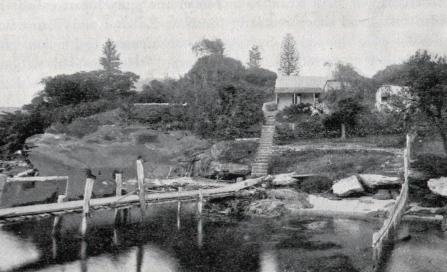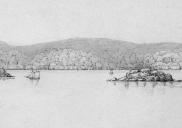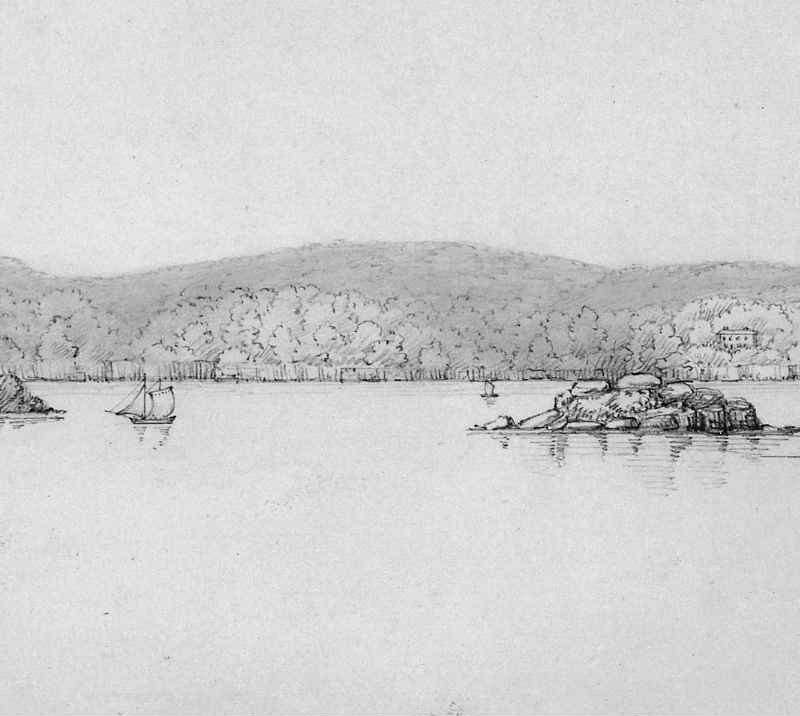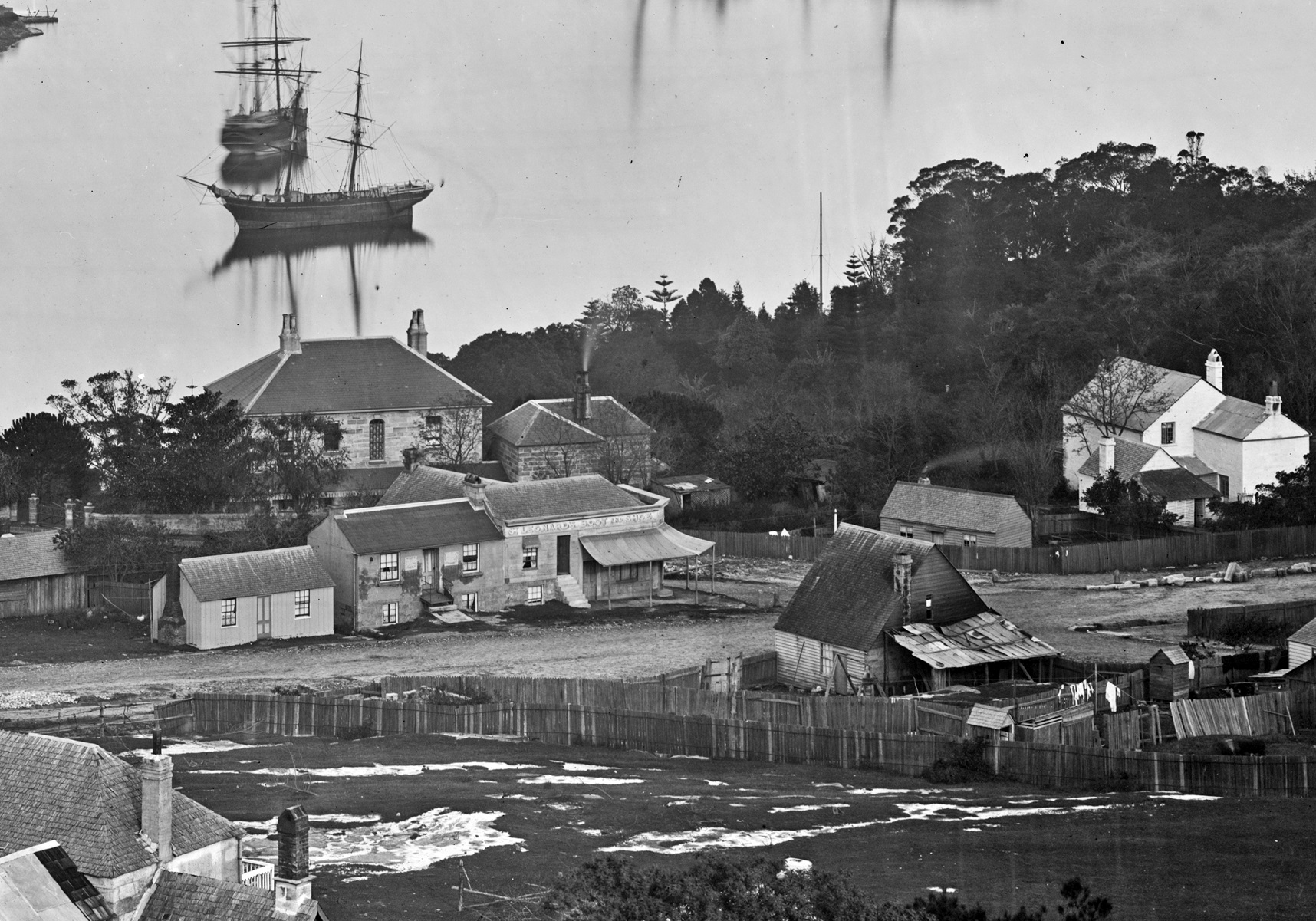|
First dwellingsMuch of North Sydney sits upon sandstone. This easily shaped rock provided shelter both for the area’s first people, the Cammeraygal, and for the European colonists who displaced them.Over millennia, wind and water created capacious rock overhangs. Those close to the harbour, and therefore close to ready food, were well used by Aboriginal people as temporary if not permanent shelters. The first European habitations tended to hug the shoreline primarily for ease of access to the main settlement on the south side, but also possibly because water views and proximity to fishing were important. There was good stone to be quarried locally when the means permitted and a sense of permanence demanded. ‘Thrupps Cottage’ was built as early as 1826, ‘Craignathan’ followed in 1831 and ‘Henbury Villa’ was made from local stone around 1838. These three were among the 18 stone or brick houses houses counted in the 1856 census. Apart from two made of metal - presumably iron sheeting - the rest of the dwellings in that year were built of timber slab or planks, or simply bark. ‘Crows Nest Cottage’, built around 1821, was one of these timber dwellings and exemplified the early bungalow tradition with its verandah. ‘St Leonards Cottage’, later Don Bank, was made of upright slabs, probably in the 1840s. Those who built the first buildings were not necessarily trained craftsman. Almost certainly the dwellings were not architect-designed. Rather they were constructed in vernacular styles – the earliest was a simple square or rectangle with a door at the centre, the more elaborate were bungalows with verandahs. The basic symmetrical forms accorded with the Georgian-style which was dominant when the colony was established in 1788. Several dwellings may well have been destroyed in the huge fire that swept the north shore from Blues Point to Bradley’s Head in 1837. While real estate advertisements from 1839 were already referring to the ‘Township of St Leonards’, the image presented by writer and artist Louisa Ann Meredith in 1840 is more of a forest in which a few houses could be seen: ‘Hills of no great elevation and very tame outline rise from the beach, dotted here and there with villas and cottages, their adjoining gardens making a pleasant green contrast with the uniform brown hue of the scrub’. (Mrs Charles Meredith, Notes and Sketches of New South Wales, 1844) At that time the north side was populated by just a few hundred souls. |
|






